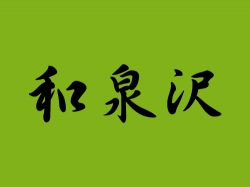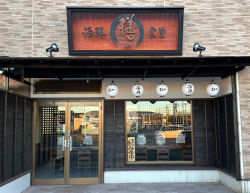Info Type
View Option
Sort by Month
Sort by Category
Back
This text has been translated by auto-translation. There may be a slight difference between the original text and the translation. (Original Language: 日本語)
2023/2/1 - 2023/2/22 / New York (ミッドタウン), New York / Other

| Venue | |
|---|---|
| Address | 145 West 57th street, New York (ミッドタウン), New York, 10019 アメリカ合衆国 |
| Date | 2023/2/1 - 2023/2/22 |
| Time |
- [Time detail]
- [Getting here]
Subway
5 min walk from 57th Street Station on F Train
N ・ Q ・ 3 min walk from 57th Street Station on R Train
A ・ B ・ C ・ D ・ 7 min walk from Columbus Circle Station on 1 Train 7 minute walk from
B ・ D ・ 10 minute walk from 7th Avenue E train station
- [Venue detail]
Map : https://goo.gl/maps/ChcpgDcR6CjSDemH8
Elegant Creatures: Reptiles, Insects, and Crustaceans in Japanese Art, an exhibition organized by the Japan Club (, sponsored by the Japan Club, JCC Fund ).
- [Contact]
- gallery@nipponclub.org
- [Registrant]The Nippon Club
- [Language]日本語
- Posted : 2023/01/19
- Published : 2023/01/19
- Changed : 2023/01/19
- Total View : 504 persons
- Find local business with Town Guide
-
- Enjoy the best combination of stylish at...

-
In a stylish atmosphere, you can enjoy Manhattan with an izakaya menu, omakase sushi, and a mix of sake and wine.
+1 (212) 986-2800WANO
-
- Moving in Hawaii ・ House Cleaning ・ Room...

-
We will work with you to find solutions to your problems and deliver services that will please you in a positive way. Moving in Hawaii ・ House Cleaning ・ Room Reorganization ・ Please feel free to cont...
+1 (808) 489-1628Up & Downsizing
-
- Passport ・ We also take passport ! VISA ...

-
★ Contact us by email or phone ★ Email: info@photostudio.tk TEL: 213-617-7700 ● Photo Studio TK's Service introduction● ◎Services for companies ・ Business trip photography ( Interior and exte...
+1 (213) 617-7700Photo Studio TK
-
- Opening in June 2023] 1 minute walk from...

-
Plaza Individualized Educational Institute Kisarazu ・ If you are looking for a preparatory school for entrance examinations, Plaza Individualized Educational Institute Kisarazu ! We will guide you to ...
+81-438-20-0333プラザ個別指導学院 木更津教室
-
- COVID19 blood test available. Hair Remov...

-
Our state-of-the-art technology makes surgery and painless, and we also offer liposuction ! chemical peels and laser hair removal. We also deal with doctor's cosmetics ( Obagi and Latisse ). We ca...
+1 (310) 326-2161Shin Family Medicine & Laser Center
-
- We provide hire car and minibus transpor...

-
We have a wide variety of vehicle types, including sedans, popular SUVs, and sprinter vans and minibuses for groups. You can choose the most suitable model for the number of passengers and purpose of ...
+1 (310) 534-7614AM World Express
-
- Japanese cuisine restaurant boasts cours...

-
We are a Japanese restaurant located in front of Kimitsu Station, a 2-minute walk from the station. Please use our restaurant for various gatherings such as business entertainment, festive occasions ・...
+81-439-52-1010日本料理 和泉沢
-
- Thinking about Lexus? Sachi is a Japanes...

-
If you are thinking of buying a Lexus, please contact Sachi ! Sachi is your one stop shop for all your Lexus needs including new, used, lease and loan. Sachi has been a Japanese speaking sales repr...
+1 (310) 940-4694South Bay Lexus
-
- Finally OPEN🎊 ! A diner where you can en...

-
On 1/6, "Kaisen Shokudo Zen" is now OPEN🎉Open for both lunch and dinner! We have a limited number of lunch menu items available, so please come early if you are interested. Our recommended "ZEN Kaisen...
+81-439-29-5554海鮮食堂 膳
-
- ◀ ︎U.S. Visa ・ Permanent Residence ・ Div...

-
Why US VISA PLUS is recommended ★ We have handled over 3250 cases to date. ★ All of our staff are professionals trained for more than 7 years in law firms . ★ We are also licensed California immigr...
+1 (310) 928-1968US VISA PLUS
-
- Water leak ・ In short ・ Emergency plumbi...

-
We, Fukuda Suido, are a waterworks company operating mainly in Kimitsu City ・ Futtsu City ・ Kisarazu City ・ Sodegaura City, Chiba Prefecture, with the motto "Thanks to you" and a humble heart. From re...
+81-439-52-0962(有)福田水道
-
- We treat a wide range of patients from b...

-
Don't you always put off taking care of your teeth ? If you wait until they actually hurt, you may end up having to go through extensive treatment. Check with your dentist every six months.
+1 (808) 518-8696Natsuko W. Nakatani, DDS
-
- Hair that has lost its shine and volume ...

-
A hair salon in Old Torrance, Beauty Care La Pinkie strives to create hairstyles that are easy to care for back home. We offer stylish and easy styles that suit your hair type. Hair Straightening D...
+1 (310) 259-8738Beauty Care La Pinkie
-
- It is a non-profit organization represen...

-
GVJCCA is working to protect the human rights of people, especially the Japanese Canadian community ! The magazine, "The Bulletin" reports our thoughts. We welcome anyone who wants to join us as a vol...
+1 (604) 777-5222Greater Vancouver Japanese Canadian Citizens' Association
-
- A restaurant with dishes that are a litt...

-
OPEN in Kimitsu City ! Western-style restaurant by an authentic chef with many years of experience in Yokohama, including hotel French cuisine and quite a few wedding banquet meals in Yokohama. Reason...
+81-439-32-1225レストラン シベール








■ In-Person :
Feb 2 ( Thu ) - Feb 23 ( Thu )
Japan Gallery ( Japan Club 7th floor 145 West 57th street, New York, 10019)
Free Admission
■ Online :
Feb 16 ( Thu ) - Mar 9 ( Thu )
Nihon Club WEB Gallery ( https://nippongallery.nipponclub.org )
All kinds of "living things" live on earth, from animals, fish and insects to plants and microbes. The total number of known species in the world is said to be about 1.75 million, but many believe that the total number of species on earth, including those not yet known, is somewhere between 5 million ~ and 30 million.
Some of the species that have diversified during the course of biological evolution are threatened with extinction due to human activities, with approximately 10 ~ 30% of known mammalian, avian, and amphibian species threatened with extinction. Biodiversity is particularly vulnerable to climate change, with approximately 20 ~ 30% of plant and animal species assessed so far likely to be at increased risk of extinction if global average temperature increases exceed 1.5 ~ 2.5°C, and a rise of 4°C or more would be considered globally significant
All "living things" are interrelated and make up the world on earth. Insects are "symbols of nature," but in recent years, dragonflies and other small insects have been disappearing one by one. The extinction of a single species threatens the extinction of the organisms that fed on it, upsetting the balance of the natural world.
Under these circumstances, the Nippon Club, as part of its efforts to address environmental issues under the SDGs, will hold an exhibition introducing outstanding Japanese art works featuring living creatures, mainly insects, reptiles and crustaceans. Since ancient times, Japanese people have felt an affinity with "living things" and have naturally expressed their familiarity with them in their daily utensils and handicrafts. This is true not only of animals, but also of reptiles, crustaceans, and insects. Jade ( and kingfishers ) were embedded in the mouths of ancient burials in China, and reptiles and insects were used as subjects of art in Europe during the Middle Ages, but few examples are as detailed or humorous as in Japan.
This exhibition features two major collections from the East Coast of the United States, including ceramics by Makazu Kozan ( 1842-1916 ), who was appointed as an Imperial Artist in the pottery department during the Meiji period, Satsuma ware, metal works including vases from the Koritsu Kosho Company ()), cloisonne enamel, iron, and copper. The exhibition will feature approximately 30 works of Japanese art, including cloisonne, iron and copper figurines, jewelry, and textiles. In these works, insects are presented in a humorous and lively manner. We hope that insects and reptiles will provide an opportunity for visitors to reflect on the importance of nature.
Organizer : The Nippon Club
Sponsor : JCC Fund,
Curator : Sachiko Hori
( Reference : Environment / Recycling-oriented White Paper on Recycling-Oriented Society "Chapter 6: Conservation of the Natural Environment and Promotion of Contact with Nature" )
( Photo ) Iron Myochin Jizai ornament, Swallowtail butterfly, Edo period, unnamed